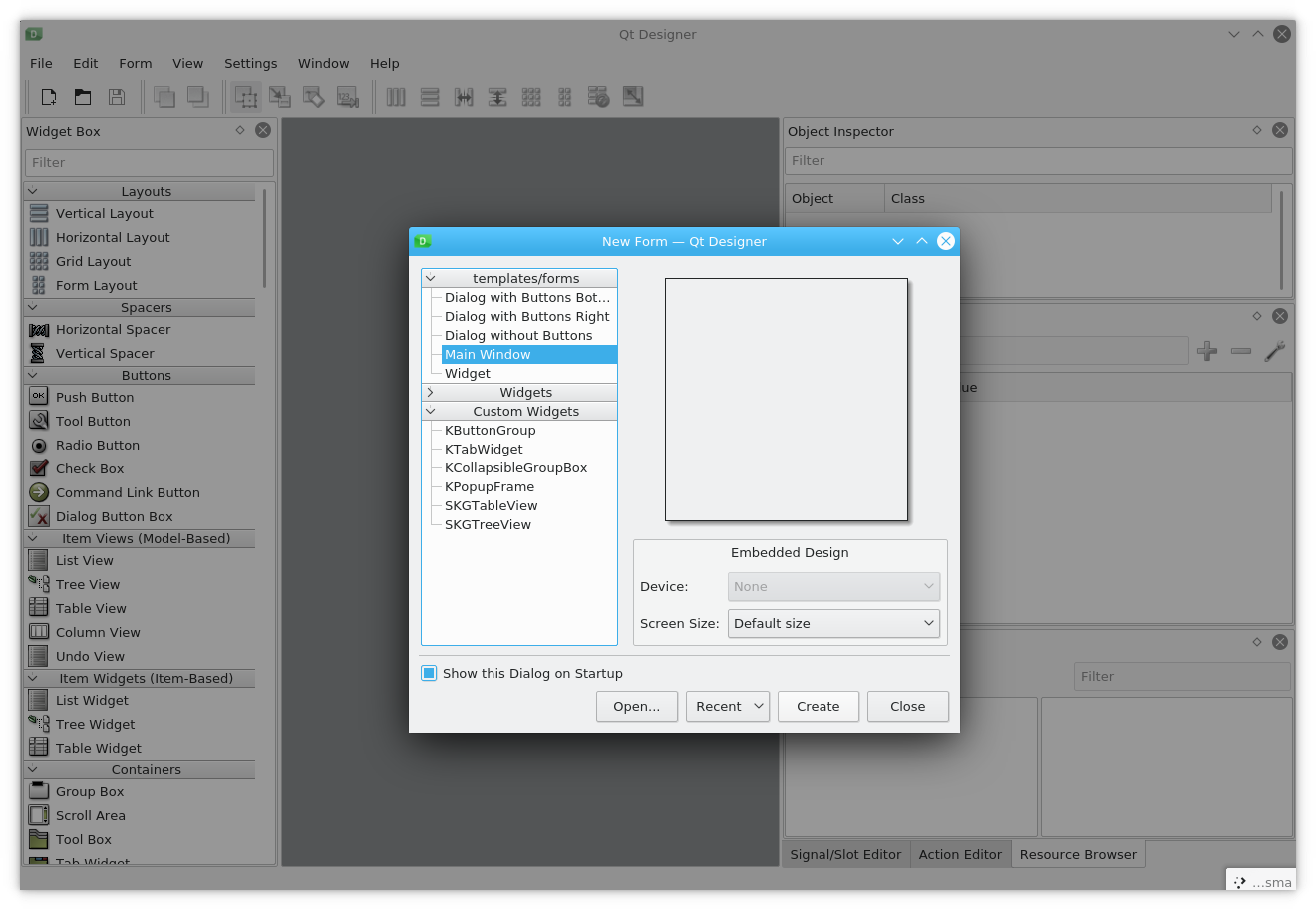
- #QT DESIGNER PYQT4 DOWNLOAD HOW TO#
- #QT DESIGNER PYQT4 DOWNLOAD PDF#
- #QT DESIGNER PYQT4 DOWNLOAD SOFTWARE#
- #QT DESIGNER PYQT4 DOWNLOAD CODE#
- #QT DESIGNER PYQT4 DOWNLOAD DOWNLOAD#
#QT DESIGNER PYQT4 DOWNLOAD HOW TO#
The book Rapid GUI Programming with Python and Qt is PyQt4-specific and covers development with Python 2.5, PyQt4 and Qt 4.2/4.3. In this step-by-step tutorial, you'll learn how to use Qt Designer to create GUIs from your windows and dialogs and use them in your Python applications.
#QT DESIGNER PYQT4 DOWNLOAD CODE#
The PyQt Wiki pages aim to provide tutorials and sample code for PyQt4.Īn overview of PyQt4 was presented at EuroPython 2006.Īn introduction to using PyQt4 with Qt Designer for the development of GUI applications was given at P圜on UK 2007. Support for Qt Designer, including facilities to add custom Python-based widgets to the standard set of Qt widgets available to user interface designers.Ĭomprehensive documentation is available for PyQt4 which includes detailed class and function documentation.
#QT DESIGNER PYQT4 DOWNLOAD SOFTWARE#
It is a free software originally designed by Riverbank Computing, it is accessible via similar terms to Qt versions older than 4.5, signifying that a wide array of licenses such as General Public License are supported, yet unlike Qt, PyQt cannot be used with LGPL. Support for XML query technologies, such as XQuery, XPath and XSLT.Īn ECMAScript interpreter with the ability to access Qt's object model What is PyQt PyQt is a Python binding of the cross-platform GUI toolkit Qt, used as a Python module.
#QT DESIGNER PYQT4 DOWNLOAD PDF#
Rich text processing, display and printing facilities, including support for PDF export (Qt 4.1 and later) Internationalization (i18n) support and integration with the Qt Linguist translation tool Easy communication between application components (signals and slots)Ī unified painting system with transparency, anti-aliasing, OpenGL integration and SVG support.Standard GUI features for applications (menus, toolbars, dock windows) PyQt exposes much of the functionality of Qt to Python, including: There is also PySide by Nokia - new alternative bindings (as of November 2009) with LGPL license that struggle to be API compatible (at least until Qt 4.6) with PyQt4. PyQt is a set of Python bindings for Qt that are dual-licensed under the GPL (version 2 and 3, with additional license exceptions) and a commercial license. With this tool, you create GUIs by dragging and dropping QWidget objects on an empty form.

The UI file was converted using pyuic.The contents of this page should probably be merged with the PyQt page and this page made to redirect there. Qt Designer is a Qt tool that provides you with a what-you-see-is-what-you-get (WYSIWYG) user interface to create GUIs for your PyQt applications productively and efficiently. This File has been designed in the Qt designer, Its a form containing a Button and List Widget. (_translate("MainWindow", "Add Download", None)) tWindowTitle(_translate("MainWindow", "MainWindow", None)) Self.statusbar = QtGui.QStatusBar(MainWindow) Self.pushButton = QtGui.QPushButton(self.centralwidget) Self.listWidget = QtGui.QListWidget(self.centralwidget) Self.centralwidget = QtGui.QWidget(MainWindow) The UI was designed in Qt designer and converted to py using pyuic.
#QT DESIGNER PYQT4 DOWNLOAD DOWNLOAD#
In Case of a download manager, the current file size can be queried and the percentage downloaded can be displayed on the progress bar. Just for the sake of demonstration, we are adding incrementing the variable step starting from 0 to 100 and updating it on progress bar. (self.step) This file contains a label and a progress bar, this file will be called in the main.py along with an argument, that argument will be put into label as a string. Self.progressBar = QtGui.QProgressBar(self.layoutWidget)

Self.label = QtGui.QLabel(self.layoutWidget) idLayout = QtGui.QGridLayout(self.layoutWidget) Return (context, text, disambig, _encoding) main.py(We will import progress.py and main_ui.py here and write the main calls here)

main_ui.py(containing our main form having a Button and a Widget list)įile 3. progress.py(containing the progress bar and a label)įile 2. So lets Start with the Example, In this example, we will have three files,įile 1. On clicking the button, a progress bar and a label will be added to the Widget List. Here in this example, we will have have a main form containing a Button and a Widget List. In this article, I am going to make a custom widget using PyQt4.


 0 kommentar(er)
0 kommentar(er)
